Reviews: Read What Others Are Saying: page 37
215 ★★★★★ reviews
148 ★★★★★ reviews
91 ★★★★★ reviews
134 ★★★★★ reviews
Colombini Magic Farewell Tour Lecture Part 2
Overall customer rating: ★★★★★reviewed by Bryan Hall (confirmed purchase)
Rating: ★★★★★ (Date Added: Tuesday 25 January, 2022)
 This is the second half of the lecture filmed November 1, 2010, three weeks before Rachel's open heart surgery. Her participation is somewhat limited, and to help her rest Aldo covers one of the tricks in this lecture (Nick Trost's "Three Way Miracle Prediction") that Rachel would normally have performed and explained.
This is the second half of the lecture filmed November 1, 2010, three weeks before Rachel's open heart surgery. Her participation is somewhat limited, and to help her rest Aldo covers one of the tricks in this lecture (Nick Trost's "Three Way Miracle Prediction") that Rachel would normally have performed and explained.
As with the first half, the overall production quality isn't particularly good. It's a single camera (camcorder?) positioned at audience center, slightly elevated, with a single microphone at the same location. The performances and explanations are generally clear enough, though you can't make out specific cards when they are on a table. The audio is a bit distant and audience noises drown out parts of the performance at times.
If you'd like a lecture from Rachel and Aldo with far better video and audio quality, try their Penguin Live lecture, which I believe was filmed in February of 2012. Most of the tricks in both parts of this lecture were also covered in that later lecture.
Here are the effects that are covered in Part 2 of this lecture:
Cutting A Rope In Three - from Rope Confection
Ring From Rope - from Rope Confection
Three Way Miracle Prediction - from Card Carnival
Animal Capers - from Card Capers
A Mental Effect - from Stand-Up Cards
Jumbo Prediction - from Card Carnival
Cone-tact (PDF)
Animal Capers and Cone-tact were not in the Penguin lecture, making them automatic highlights for this video.
Animal Capers is performed and taught by Aldo, and then Rachel gives another presentation using Paul Curry's "switchless switch" technique. Aldo's presentation uses two spectators, making it an improved performance over the one in "Card Capers" (where he mentions that he usually uses two spectators rather than just showing it to Rachel and the camera), and Rachel's extra presentation isn't covered in "Card Capers" at all.
Cone-tact is Aldo's presentation of Dai Vernon's classic "Ball, Cone and Handkerchief" routine. The Colombinis had a DVD version of Cone-tact on their website, but it is long out of production and difficult to find. The PDF is available, but this lecture might be the only video available to see Aldo performing it for an audience. He doesn't teach the full routine in detail, but he covers what he calls the key move (repeated as needed) that would enable you to perform a good portion of the routine.
I'd say the other highlights from this half of the lecture are Three Way Miracle Prediction and A Mental Effect. (The "Stand-Up Cards" video lists the trick as "A Mental Effect", while the Farewell Tour lecture notes PDF calls it "A Mental Trick".) Both are easy to perform and potentially very strong effects.
Aldo noted that Restless Colors was a brand new product for them and that this was the very first time he had performed it in a lecture. It wasn't included in the lecture notes they offered at the time (this was actually before the Farewell Tour, and the notes offered then were different from the later Farewell Tour notes). Unfortunately, the instruction was a bit rushed, otherwise Restless Colors would be THE highlight trick of this video.
(The trick is similar to Alex Elmsley's "Dazzle", but without gaff cards. Along the same lines, John Bannon's "Sizzle" works with a smaller initial packet, and you can assemble your own set of cards if necessary from just five different decks where eight decks are needed to assemble the packet for "Restless Colors".) The rope effects are covered in much greater detail (and with better video and audio) in the Penguin lecture, which also adds another ring/rope effect.
Jumbo Prediction requires a gimmick that is difficult to find. But if you do purchase a jumbo deck to make your own gimmicks (most likely by simply pasting jumbo cards together), you can make many of them based on different cards to have a broad selection of cards to use whenever you perform the effect.
If you are trying to choose between the two parts of this lecture and the Penguin lecture, go for the Penguin lecture first. It has a few items not covered here (Contact Colors, the extra ring/rope effect) and has better instruction with better audio and video for several of the other tricks. If you find you still want more, each half of this lecture has two tricks not covered in that one, plus additional stories and other humor from the Colombinis. And of course, the humor and entertainment were what Rachel and Aldo were all about. Thanks for the memories, and rest in peace.
Running time 59:23.
Il Genio di Grant
Overall customer rating: ★★★★★reviewed by Simone Scaravella (confirmed purchase)
Rating: ★★★★★ (Date Added: Tuesday 25 January, 2022)
 Ottimo volume in Italiano, ben Fatto ed effetti stupendi.
Ottimo volume in Italiano, ben Fatto ed effetti stupendi.
Annemann's Complete One Man Mental and Psychic Routine
Overall customer rating: ★★★★★reviewed by Jon Bowne (confirmed purchase)
Rating: ★★★★★ (Date Added: Sunday 23 January, 2022)
 This is a gold mine. There are effects almost 100 years old in here that you can easily adapt to today. If you can do a billet switch (it's taught in here), you can do the mentalism in this book. I watched a talented peer do the bonus material "Master Mind" almost exactly as written and he killed. It is a complete 20-minute act. At $3.50, this is a steal.
This is a gold mine. There are effects almost 100 years old in here that you can easily adapt to today. If you can do a billet switch (it's taught in here), you can do the mentalism in this book. I watched a talented peer do the bonus material "Master Mind" almost exactly as written and he killed. It is a complete 20-minute act. At $3.50, this is a steal.
Colombini Magic Farewell Tour Lecture Part 1
Overall customer rating: ★★★★★reviewed by Bryan Hall (confirmed purchase)
Rating: ★★★★★ (Date Added: Sunday 23 January, 2022)
 Let's get the negative points out of the way. First, the description is somewhat misleading. This isn't their last filmed lecture. This one was filmed on November 1, 2010, three weeks before Rachel had her open heart surgery.
Let's get the negative points out of the way. First, the description is somewhat misleading. This isn't their last filmed lecture. This one was filmed on November 1, 2010, three weeks before Rachel had her open heart surgery.
More importantly, the filming is NOT high quality. It's a single camera, fixed position at audience center. You can see the performance clearly enough to learn the tricks and hear most of the jokes, but the camera position isn't high enough to make out specific cards when they're on a table. Audience (in particular one of the host's children in the earlier parts of the lecture) and other noises sometimes drown out bits of the performance.
If you want a later lecture from them with FAR better production quality, try their Penguin Live lecture, which I believe was filmed in February 2012. Most of the tricks taught are the same between the two lectures. The explanations are usually clear enough in this one, but the better camera work and better audio in the other one helps.
The host had asked Aldo to open with roughly a 10-minute performance, so a few of the early tricks are performance-only. Part 1 includes:
Vanishing thumbtip (gag, not really a trick) - included on Gagbuster
Six Card Repeat, which Aldo jokingly calls "How To Kill A Classic" (Performance only at first, but later in the lecture he notes that it's Senator Crandall's handling and gives a basic explanation including the one key move needed to perform his version. He also said that a DVD with that version was put out by Teddy Langsford, but I can't find any references to it.)
Rope In (not taught - perfomance only) - available on Roped In.
Fireworks (not taught - performance only) - available on Fireworks 12 Card Revelation Routine.
Zodiac code - included on A Host Of Surprises.
discussion/brief explanation of the earlier Six Card Repeat
Comedy Six Card Repeat - included on Gagbuster.
Punch His Match - this lecture is the only video source I know of for it, but it's available on several PDFs:
news brief gag - included on Gagbuster
Baffling Book - included on Wild About Harry.
Even if you already have the Penguin lecture, this is worth the extra $10 for Punch His Match and the Crandall version of the Six Card Repeat. I do not know of any other video sources with Aldo performing either of these tricks. (The explanation of Punch his Match also has some performance tips, including some interesting ideas from audience members.) I'd say the video earns four stars for these two tricks alone.
Beyond those two items, I'd say Rachel's three performed tricks (Zodiac Code, Baffling Book, Tri-Color Cups And Balls) are the highlights of this half of the lecture, though all three are also covered with better audio and video in the Penguin lecture. This also has a few extra stories if you want more of their humor - and of course the humor was half the fun of any Colombini performance.
Running time 74:55.
Victory Cartons
Overall customer rating: ★★★★★reviewed by Diego Lasserre (confirmed purchase)
Rating: ★★★★★ (Date Added: Sunday 23 January, 2022)
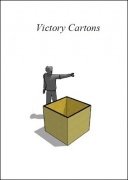 Beautiful illusion... the beauty of the Simple.
Beautiful illusion... the beauty of the Simple.
The Kolophon Revisited
Overall customer rating: ★★★★★reviewed by Matthew Overd (confirmed purchase)
Rating: ★★★★★ (Date Added: Wednesday 12 January, 2022)
 The Obvious thing to say here is the ad copy is 100% accurate. However, I don't think this truly gives it justice. After reading this it feels even better then how it's described. As far as missing well I feel like most mentalists are generally ok with this level of missing and this gets better with practice, to the point I feel like misses would become that rare it wouldn't matter anyway. To be cliche "I hope no one buys this" to be honest it would be a shame if this became too common.
Honestly, if it sounds like something you may like, just buy, you will like it.
The Obvious thing to say here is the ad copy is 100% accurate. However, I don't think this truly gives it justice. After reading this it feels even better then how it's described. As far as missing well I feel like most mentalists are generally ok with this level of missing and this gets better with practice, to the point I feel like misses would become that rare it wouldn't matter anyway. To be cliche "I hope no one buys this" to be honest it would be a shame if this became too common.
Honestly, if it sounds like something you may like, just buy, you will like it.
Souvenirs d'Italie
Overall customer rating: ★★★★★reviewed by Tony Arthur (confirmed purchase)
Rating: ★★★★★ (Date Added: Tuesday 11 January, 2022)
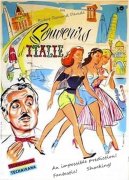 Unfortunately, I am very disappointed with this effect.
Unfortunately, I am very disappointed with this effect.
While it is based on an interesting mathematical principle, the attempt to turn it into a magic trick is in my opinion terrible, and nothing that could be used in any kind of real environment. It is far too procedural to be entertaining, and in my opinion, would never produce anything like the audience reaction that the advert suggests.
More than that, without giving away the method, the combination of the names on the postcards, the way the postcards are arranged beforehand, the nature of the instructions, and the precise and exact manner in which they are delivered would make any audience scream "mathematical principle in play here".
If that weren't enough, the instructions are so exact and have to be followed while your back is turned, which means that the spectator could very easily make a mistake. Since you would have no way of knowing they'd got something wrong, there would be no way for you to recover and your big reveal would be totally wrong.
I therefore recommend against getting this effect.
I do however strongly recommend continuing to use this site, as I wrote a more detailed version (including my observations on the method) of this review to Chris Wasshuber after I bought the effect, and as part of his reply he said "I would also like to ask you to share your opinion in a review of the product. This would help others better understand if this is the right product for them or not. Also star-rating your purchases would be a great way to help weed out the good from the bad." This would suggest that Chris is a trustworthy seller who is concerned to make sure that his customers buy things that are right for them, rather than just wanting to sell things to us, and that's a rare thing in this internet world!
Keeping Control
Overall customer rating: ★★★★★reviewed by Christian Mach (confirmed purchase)
Rating: ★★★★★ (Date Added: Tuesday 11 January, 2022)
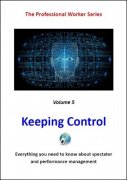 I'm a serious amateur intermediate magician. I already did some shows and close-up.
From my experience, I must say that all that Mark Leveridge wrote, is true. He thought about all the details and gives practical advice.
I recommend this booklet at least to all the hobbyist magicians, but I think it can also be useful to some professional magicians.
I think that even you are a hobbyist, you must put on your magic as a professional, and for that, this booklet will help you. I'm sure of that.
I'm a serious amateur intermediate magician. I already did some shows and close-up.
From my experience, I must say that all that Mark Leveridge wrote, is true. He thought about all the details and gives practical advice.
I recommend this booklet at least to all the hobbyist magicians, but I think it can also be useful to some professional magicians.
I think that even you are a hobbyist, you must put on your magic as a professional, and for that, this booklet will help you. I'm sure of that.
Interactive Matrix Formula
Overall customer rating: ★★★★★reviewed by samuel thielman (confirmed purchase)
Rating: ★★★★★ (Date Added: Sunday 09 January, 2022)
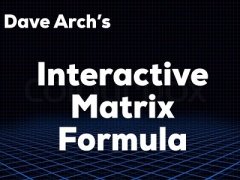 Nice trick, but there's no formula. Just a set of directions to be used to move around the matrix during the trick. I bought this looking for an actual explanation of how the trick works.
Nice trick, but there's no formula. Just a set of directions to be used to move around the matrix during the trick. I bought this looking for an actual explanation of how the trick works.
Genii Volume 17 (Sep 1952 - Aug 1953)
Overall customer rating: ★★★★★reviewed by John Lynch (confirmed purchase)
Rating: ★★★★★ (Date Added: Sunday 09 January, 2022)
 Obviously magic from the past influences the effects and illusions we see today. These archived magazines, which provide a view of the past methods are invaluable.
Obviously magic from the past influences the effects and illusions we see today. These archived magazines, which provide a view of the past methods are invaluable.
More Magic
Overall customer rating: ★★★★★reviewed by John Lynch (confirmed purchase)
Rating: ★★★★★ (Date Added: Sunday 09 January, 2022)
 Finding the book, available digital, has complemented receiving "Modern Magic", a gift from my son. Since many of Prof. Hoffman's books are scarce and highly priced, finding them on Lybrary.com is a big deal for me.
Finding the book, available digital, has complemented receiving "Modern Magic", a gift from my son. Since many of Prof. Hoffman's books are scarce and highly priced, finding them on Lybrary.com is a big deal for me.
The Dai Vernon Book of Magic
Overall customer rating: ★★★★★reviewed by Samuel Kugler (confirmed purchase)
Rating: ★★★★★ (Date Added: Sunday 09 January, 2022)
 One of the best magic books out there - for only 20$. You get one of the best coin routines (Chinese Classic, a Coins through table effect), a great card stab (which you can perform standing or sitting) by the great Nate Leipzig, the best C&B routine (in my opinion) and many more. And the chapter 'Vernon Touch' is probably worth the 20$ alone. Even if you don't perform one single effect from this book (but seriously, why would you do this?), to read the thoughts of the great Professor is inspiring and fascinating. He was a true artist!
So don't read this comment written in bad English - buy this book by the great Professor!
One of the best magic books out there - for only 20$. You get one of the best coin routines (Chinese Classic, a Coins through table effect), a great card stab (which you can perform standing or sitting) by the great Nate Leipzig, the best C&B routine (in my opinion) and many more. And the chapter 'Vernon Touch' is probably worth the 20$ alone. Even if you don't perform one single effect from this book (but seriously, why would you do this?), to read the thoughts of the great Professor is inspiring and fascinating. He was a true artist!
So don't read this comment written in bad English - buy this book by the great Professor!
Shank Shuffle
Overall customer rating: ★★★★★reviewed by Marc Rehula (confirmed purchase)
Rating: ★★★★★ (Date Added: Sunday 09 January, 2022)
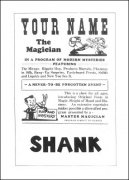 There are two demo videos, totaling 20 seconds. The explanation is one exposed view video, totaling 23 seconds. The pdf contains two pages of basic instructions. If you're looking for tips and subtleties - as I was - you won't find any.
There are two demo videos, totaling 20 seconds. The explanation is one exposed view video, totaling 23 seconds. The pdf contains two pages of basic instructions. If you're looking for tips and subtleties - as I was - you won't find any.
Everybody's Fooled
Overall customer rating: ★★★★★reviewed by Harry Damareck (confirmed purchase)
Rating: ★★★★★ (Date Added: Thursday 06 January, 2022)
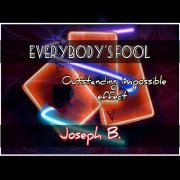 As a hobbyist not a professional I always look for new things to entertain my friends and family. This is a perfect trick for that. They have no clue. I always borrow a deck because if I use my own it looks like an obviously marked deck trick.
As a hobbyist not a professional I always look for new things to entertain my friends and family. This is a perfect trick for that. They have no clue. I always borrow a deck because if I use my own it looks like an obviously marked deck trick.
Deluxe Three Card Monte
Overall customer rating: ★★★★★reviewed by Robert McGee (confirmed purchase)
Rating: ★★★★★ (Date Added: Thursday 30 December, 2021)
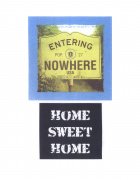 I have been studying card and close-up magic since 1962. I have bought several things over the past few years from Lybrary.com and been very satisfied. Unfortunately, I must give a very negative review to this purchase. It is one page describing a very basic routine and a couple of standard endings. This is the only time I bought something from Lybrary.com and felt ripped off. If I could rate it zero stars that would be too high.
I have been studying card and close-up magic since 1962. I have bought several things over the past few years from Lybrary.com and been very satisfied. Unfortunately, I must give a very negative review to this purchase. It is one page describing a very basic routine and a couple of standard endings. This is the only time I bought something from Lybrary.com and felt ripped off. If I could rate it zero stars that would be too high.
Victory Bouquet
Overall customer rating: ★★★★★reviewed by David Nethery
Rating: ★★★★★ (Date Added: Thursday 30 December, 2021)
 An essential reference for making spring flowers. This booklet covers Martineau's method of making a large bouquet (complete with long stems) of spring flowers, but this book would also be enormously useful to anyone wanting to make individual spring flowers for the traditional Flowers from Paper Cone production. Martineau gives you precise instructions, with very clear illustrations, on how to make the flowers. If you know Martineau's illustrations from the Rice Encyclopedia of Silk Magic then you will know how precise his drawings are.
An essential reference for making spring flowers. This booklet covers Martineau's method of making a large bouquet (complete with long stems) of spring flowers, but this book would also be enormously useful to anyone wanting to make individual spring flowers for the traditional Flowers from Paper Cone production. Martineau gives you precise instructions, with very clear illustrations, on how to make the flowers. If you know Martineau's illustrations from the Rice Encyclopedia of Silk Magic then you will know how precise his drawings are.
Spring Flowers have really become a do-it-yourself project for anyone who wants decent-looking blooms that halfway resemble real flowers (from a distance). These are not difficult to make once you understand the proportions and the steps for constructing them, but they are very time consuming to produce (and to make a decent looking production you need at least 50) so the days of purchasing good looking pre-made spring flowers from a magic dealer have passed. You'll have to rely on your own craftiness and the investment of your own time. Almost all of the pre-made spring flowers you can obtain from a magic supplier these days are made cheaply in India and they don't look very good, most don't even attempt to look like real flowers (the worst offenders being the "flowers" that are made from metallic-looking mylar. What those are intended to resemble I have no idea, but they sure don't look like flowers.) By combining the construction techniques that Martineau covers (either for individual blooms or a whole bouquet with long stems) along with adding some tasteful stippling on the inner part of the flowers and stippling along the outer edges of the flowers using colored Sharpie markers, or PrismaColor or Copic Markers, you can increase the resemblance of the blooms to real flowers (you can also brush on colored dye with a slightly wet watercolor brush on the edges of the blooms which can yield some interesting color bleed gradients --- experiment!) Another good option is to obtain some of the artificial flowers made from thin fabric at a craft store and use those to construct your spring flowers, instead of using the traditional tissue paper. The fabric flowers will tend to be a bit thicker than the paper flowers so that's something to consider in terms of the size of the load, but the fabric flowers (and green leaves) look realistic from a very short distance.
One bit of advice that is often forgotten when using spring flowers is the ratio of green leaves to colored blooms: it should be a ratio of 50 - 50, or some say 60 - 40 (that is for every 4 colored blossoms you would include 6 all green, or at least for every 5 colored blooms include 5 all green). Also, it tends to look better to have each bouquet or batch of spring flowers produced to be all one color, for example, all-white blooms, or all pink, or all red, all yellow, instead of mixing in multiple colors like red, yellow, purple, orange, blue, white, green. Or vary it by having mostly white blooms, but a few pink dropped in the mix. (again, keeping the proportion of all green leaves higher than the number of colored blooms) If you want to see how good this can look search out a video of French magician Dani Lary performing his act "The Magical Gardener".
Bending Minds 1
Overall customer rating: ★★★★★reviewed by Paul Critelli (confirmed purchase)
Rating: ★★★★★ (Date Added: Thursday 30 December, 2021)
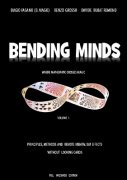 The instruction booklet is for me, in a word, terrible. The translation is often quite poor, and the continuity and explanation of even the basic system and then what the "example" is supposed to be showing are misleading, confusing, and left me wondering how anyone without some basic knowledge of the binary system could ever follow this. Although I would never claim to be able to do anything that the authors may be able to accomplish on their lunch breaks, the binary system is not difficult even for me to grasp. However, their explanation and use of it boggles the mind of someone who does have a Ph.D. in psychology, who has read and performed Magic for 40 years, and who owns 7000 books on Magic. Maybe it was the time of the year - month - week - day, but several readings of that first chapter (which I did not think I would need to do) still left me quite confused and wondering if parts had been left out. I suspect there were no readings and "screenings" by people who did not have an extensive history with several - perhaps all - of the topics the authors are trying (so it is assumed . . . ?) to teach. Certainly, there was no "native speaker" that did go over the translation, and following the hodgepodge of partial effect and methods and expectations left me quite unamused. I did get volumes 1 and 2, but the adoption of 3 is in serious jeopardy. I will take yet another (my fifth) stab at trying to understand the words on the page, and I do NOT expect any sort of "push button" easy-peasy Magic, but I do expect clear and direct communication. This is - definitely not astrophysics, but the authors could definitely take some lessons from Dr. Neil deGrasse Tyson in communicating . . . anything.
The instruction booklet is for me, in a word, terrible. The translation is often quite poor, and the continuity and explanation of even the basic system and then what the "example" is supposed to be showing are misleading, confusing, and left me wondering how anyone without some basic knowledge of the binary system could ever follow this. Although I would never claim to be able to do anything that the authors may be able to accomplish on their lunch breaks, the binary system is not difficult even for me to grasp. However, their explanation and use of it boggles the mind of someone who does have a Ph.D. in psychology, who has read and performed Magic for 40 years, and who owns 7000 books on Magic. Maybe it was the time of the year - month - week - day, but several readings of that first chapter (which I did not think I would need to do) still left me quite confused and wondering if parts had been left out. I suspect there were no readings and "screenings" by people who did not have an extensive history with several - perhaps all - of the topics the authors are trying (so it is assumed . . . ?) to teach. Certainly, there was no "native speaker" that did go over the translation, and following the hodgepodge of partial effect and methods and expectations left me quite unamused. I did get volumes 1 and 2, but the adoption of 3 is in serious jeopardy. I will take yet another (my fifth) stab at trying to understand the words on the page, and I do NOT expect any sort of "push button" easy-peasy Magic, but I do expect clear and direct communication. This is - definitely not astrophysics, but the authors could definitely take some lessons from Dr. Neil deGrasse Tyson in communicating . . . anything.
Impossible Memory
Overall customer rating: ★★★★★reviewed by Alton Knight (confirmed purchase)
Rating: ★★★★★ (Date Added: Wednesday 15 December, 2021)
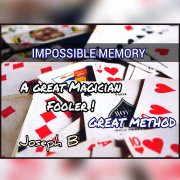 Very easy to do, extremely clever. Uses a borrowed deck that can be shuffled by the spectator. Kudos Joseph B!
Very easy to do, extremely clever. Uses a borrowed deck that can be shuffled by the spectator. Kudos Joseph B!
Balloon Shows
Overall customer rating: ★★★★★reviewed by Christian Kies (confirmed purchase)
Rating: ★★★★★ (Date Added: Wednesday 15 December, 2021)
 Deeply disappointed. You will not learn much about a balloon show but how to teach the kids how they can make a balloon dog.
Deeply disappointed. You will not learn much about a balloon show but how to teach the kids how they can make a balloon dog.
Victory Cartons
Overall customer rating: ★★★★★reviewed by Jose Luis Perandones Colino (confirmed purchase)
Rating: ★★★★★ (Date Added: Friday 10 December, 2021)
 A great cardboard illusion. 7-page ebook with manufacturing and production drawings, very clear and simple. Easy to carry, easy to assemble, easy to perform, a great illusion, and free, what more could you ask for.
A great cardboard illusion. 7-page ebook with manufacturing and production drawings, very clear and simple. Easy to carry, easy to assemble, easy to perform, a great illusion, and free, what more could you ask for.
The Expert MC Toolkit & Resource Manual
Overall customer rating: ★★★★★reviewed by paul nightingale (confirmed purchase)
Rating: ★★★★★ (Date Added: Thursday 09 December, 2021)
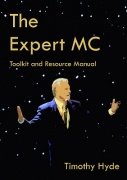 Great, condensed reference for Master of ceremonies. It has a wonderful balance of information and direct layout.
Great, condensed reference for Master of ceremonies. It has a wonderful balance of information and direct layout.
Irresistible Close-Up Magic
Overall customer rating: ★★★★★reviewed by Bill Palmer (confirmed purchase)
Rating: ★★★★★ (Date Added: Sunday 05 December, 2021)
 I've done close-up magic for more than 60 years, under every working condition imaginable, and for audiences of every level of social standing, from drunk rednecks to English royalty. This is the kind of magic that will make you a more versatile performer.
I've done close-up magic for more than 60 years, under every working condition imaginable, and for audiences of every level of social standing, from drunk rednecks to English royalty. This is the kind of magic that will make you a more versatile performer.
MORE: Multiple Outs Reimagined
Overall customer rating: ★★★★★reviewed by Christian Mach (confirmed purchase)
Rating: ★★★★★ (Date Added: Friday 03 December, 2021)
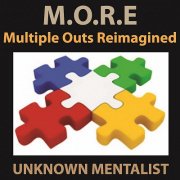 Not a new idea (or perhaps new with blank business cards). The suggested applications are too mathematical and not very interesting for me.
Not a new idea (or perhaps new with blank business cards). The suggested applications are too mathematical and not very interesting for me.
Circlet
Overall customer rating: ★★★★★reviewed by John Scialli (confirmed purchase)
Rating: ★★★★★ (Date Added: Thursday 02 December, 2021)
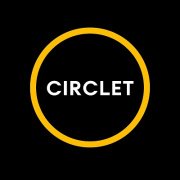 Excellent teaching video. Looks like the trailer here. Other sites have slightly different trailers which have different color scheme. Actual video is with a black shirt against yellow background. The teaching is text only; large, kept on view for a good while. All steps are repeated, some action is stopped. Requires band type ring about 1 size too big and some PRYM. Minimal DIY. Sleight is slight, requiring as much dexterity as you need to use with a break-away wand (although no mechanics in common). Highly recommended!
Excellent teaching video. Looks like the trailer here. Other sites have slightly different trailers which have different color scheme. Actual video is with a black shirt against yellow background. The teaching is text only; large, kept on view for a good while. All steps are repeated, some action is stopped. Requires band type ring about 1 size too big and some PRYM. Minimal DIY. Sleight is slight, requiring as much dexterity as you need to use with a break-away wand (although no mechanics in common). Highly recommended!
Deluxe Three Card Monte
Overall customer rating: ★★★★★reviewed by Colin Massey (confirmed purchase)
Rating: ★★★★★ (Date Added: Thursday 02 December, 2021)